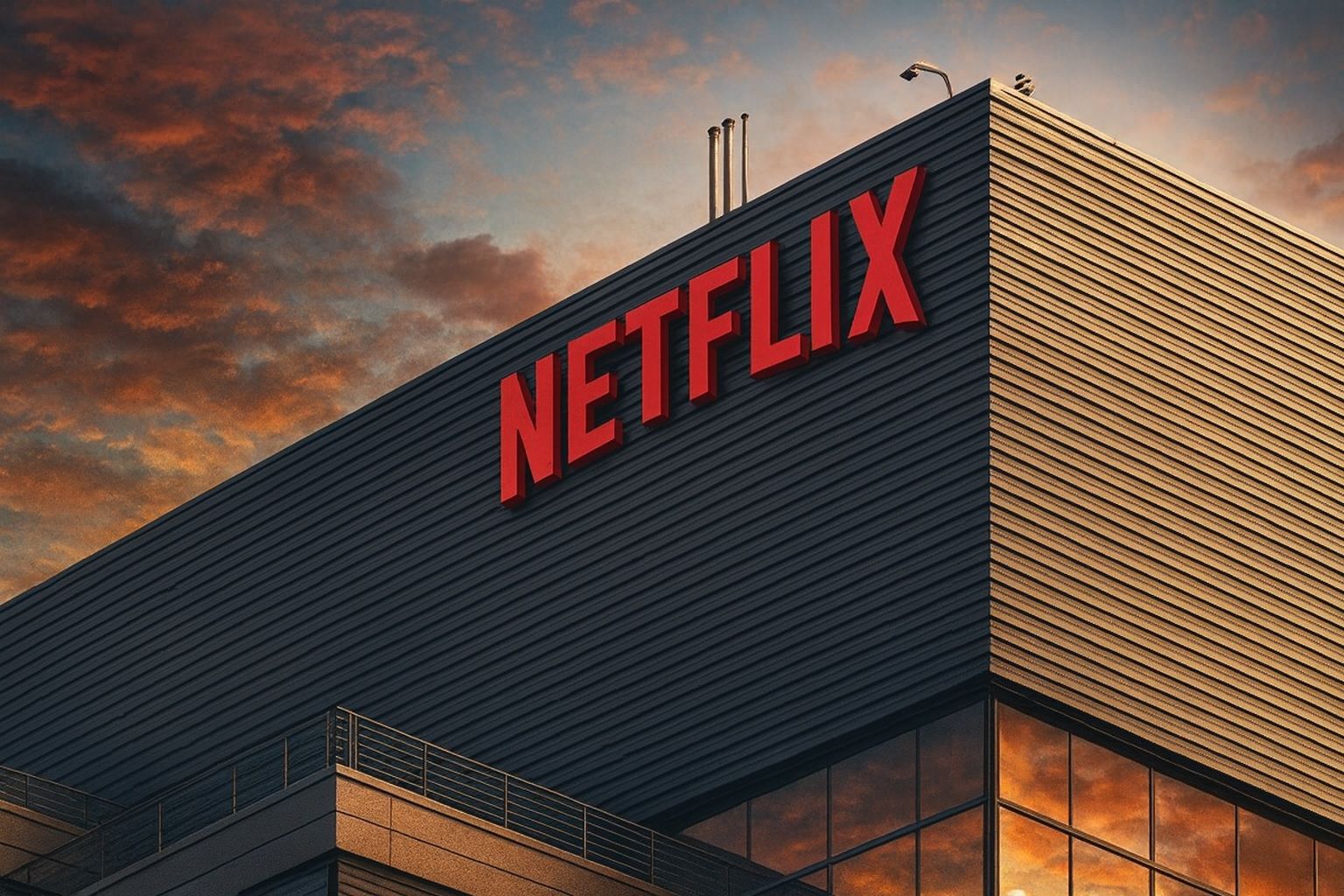- Stock at multi-year highs: Netflix (NASDAQ: NFLX) has rallied roughly 70% over the past year and trades near $1,210–$1,220 in mid-October 2025 [1]. On Oct. 20 it closed at $1,238.56, up 3.3% as investors braced for Q3 earnings [2]. This surge has left Netflix sharply outperforming the S&P 500 (up ~18% YTD) and riding a generally bullish market backdrop [3] [4].
- Earnings preview: Netflix reports Q3 on Oct. 21 after the close [5] [6]. Analysts expect ~17% year-on-year revenue growth to about $11.5 billion and ~27% profit growth, driven by a hit content slate (K-Pop Demon Hunters, Wednesday S2, Stranger Things) [7] [8]. The focus has shifted from subscriber counts to monetization – especially advertising and margins [9] [10]. Consensus estimates call for roughly $6.9–7.0 EPS in Q3 [11] [12], with guidance likely to emphasize revenue and free cash flow.
- Key metrics: Netflix ended Q2 2025 with revenue $11.08B (+15–16% YoY) and GAAP EPS $7.19, beating forecasts [13]. Management reaffirmed 2025 guidance (~$44–45B revenue, ~29.5% operating margin) [14]. Free cash flow is strong (about $2.3B in Q2, nearly doubling YoY [15]). The company also now has ~302 million paid subscribers worldwide [16], making it by far the largest streamer.
- Ad tier and gaming: Netflix’s ad-supported plan has surged to ~94 million monthly users [17]. Analysts project ad revenue will more than double in 2025 [18]. Meanwhile, Netflix has invested ~$1 billion in video gaming studios and released 120+ mobile games [19]. Early signs are mixed: some user engagement gains but little profit. For example, Omdia’s Rob Gallagher warns that games “stand out awkwardly” on Netflix since most subscribers “come for a passive, lean-back viewing experience” [20]. Wedbush’s Michael Pachter similarly notes Netflix’s “limited roster of iconic intellectual property” as a hurdle in gaming [21]. Even the company’s own executives admit these new segments aren’t profitable yet: “in the short term, they are not profitable segments,” says Brian Mulberry of Zacks [22].
- Market sentiment: Wall Street is broadly bullish on NFLX. Roughly 23 analysts rate it a “Buy” vs only 3 “Sell” [23]. The average 12-month price target is in the $1,330–1,340 range [24], implying ~10–20% upside. Many firms have higher targets – Bernstein/Evercore around $1,375–1,390, Wedbush $1,500 – while Goldman Sachs is more cautious at ~$1,300 [25] [26]. Netflix’s forward P/E is near 50× [27], so analysts say execution must justify this lofty valuation. As one note observes, Netflix has been “a strong stock to own in 2025” but must deliver results to sustain its rating [28].
- Partnerships and content: Netflix continues to leverage marketing deals and hit content. For example, it struck a global co-marketing deal with Anheuser-Busch InBev, tying its popular shows to beer brands and live sports broadcasts [29] [30]. AB InBev’s CMO Marcel Marcondes says “Streaming is a social and shared experience — it’s an occasion where beer and entertainment come together” [31]. Meanwhile, Netflix’s sports rights (NFL games on Christmas, boxing events, upcoming FIFA Women’s World Cups) are seen as a way to attract viewers and advertisers. AJ Bell’s Dan Coatsworth notes that “sports rights can be incredibly expensive” but Netflix’s strategy of focusing on special events “makes sense” as these events are “perfect for attracting advertisers” [32]. Strong hit series (Squid Game S2, Stranger Things S4, Wednesday S2, The Crown S6, etc.) are also driving user engagement globally.
- Competition: Despite the rapid growth, competition is intense. Netflix still leads globally with ~302M subs, far more than any rival [33], but peers are closing in. Disney recently reported 126M Disney+ subs [34] and Amazon Prime Video is similarly large. Analysts warn that growth is slowing in Netflix’s most mature markets, and content costs (and licensing battles) are major risk factors [35]. New entrants (from YouTube, TikTok to local streaming services) are also vying for attention. On balance, Netflix’s scale and diverse library remain advantages – Evercore highlights “strong U.S. market penetration” and high satisfaction as supports for Netflix’s outperformance [36].
Macroeconomic Backdrop
Investors also consider the broader economy. After a year of volatility, the U.S. Federal Reserve began easing in 2025. By mid-October, the Fed’s benchmark rate was 4.00–4.25% [37]. Economists say Fed officials are trying to gently “take the foot off the brake” on policy to avoid a sharp slowdown [38]. In this environment (lower rates, contained inflation), stocks like Netflix have generally been supported. As one analyst notes, Netflix’s recent gains occurred “in a favorable macroeconomic context, with expectations of monetary easing in the U.S. and relative stability in bond markets” [39]. However, rising U.S.–China trade tensions and higher volatility have injected caution into markets [40]. Overall, the S&P 500 is up ~13% YTD but leadership is narrowing – investors will watch whether Netflix’s results help sustain the rally or shake out weaker hands.
Outlook and Forecast
With its Oct. 21 earnings report imminent, Netflix stock is poised for a short-term move either way. Traders will zero in on whether Q3 growth meets forecasts (~17% revenue gain) and whether management raises guidance. Netflix has shifted its narrative from subscriber counts to revenue and profit quality, so any surprises in ARPU, ad revenue or margins could move the stock. Visible Alpha data cited in research suggests analysts expect operating margins rising above 32% by 2026, driving EPS toward ~$40 by 2027 [41] – a far cry from 2024 EPS ~$20. If Netflix can meet or beat these lofty forecasts, many Wall Street targets ($1,300–$1,500) could be validated [42]. In a bull case (strong ad and gaming uptake), Netflix could even approach a $1 trillion market cap (~$2,200/share) [43]. Conversely, any sign of slowing momentum could trigger a pullback; after rallying strongly, analysts warn the stock remains “priced for perfection” [44].
Key sources: Recent media reports and expert analyses [45] [46] [47] [48] [49] [50] – including Reuters, Nasdaq, ts2.tech, and industry analysts – were consulted in preparing this report. Each source is cited inline.
References
1. ts2.tech, 2. www.ideal-investisseur.fr, 3. www.ideal-investisseur.fr, 4. ts2.tech, 5. ir.netflix.net, 6. www.reuters.com, 7. www.reuters.com, 8. www.reuters.com, 9. www.reuters.com, 10. www.reuters.com, 11. capital.com, 12. www.reuters.com, 13. ts2.tech, 14. ts2.tech, 15. ts2.tech, 16. ts2.tech, 17. www.reuters.com, 18. www.reuters.com, 19. www.reuters.com, 20. www.reuters.com, 21. www.reuters.com, 22. www.reuters.com, 23. ts2.tech, 24. ts2.tech, 25. ts2.tech, 26. ts2.tech, 27. ts2.tech, 28. ts2.tech, 29. www.reuters.com, 30. www.reuters.com, 31. www.reuters.com, 32. www.reuters.com, 33. ts2.tech, 34. www.reuters.com, 35. ts2.tech, 36. ts2.tech, 37. www.investopedia.com, 38. www.investopedia.com, 39. www.ideal-investisseur.fr, 40. www.reuters.com, 41. ts2.tech, 42. ts2.tech, 43. ts2.tech, 44. www.ebc.com, 45. ts2.tech, 46. www.reuters.com, 47. www.reuters.com, 48. www.reuters.com, 49. www.reuters.com, 50. en.oninvest.com







